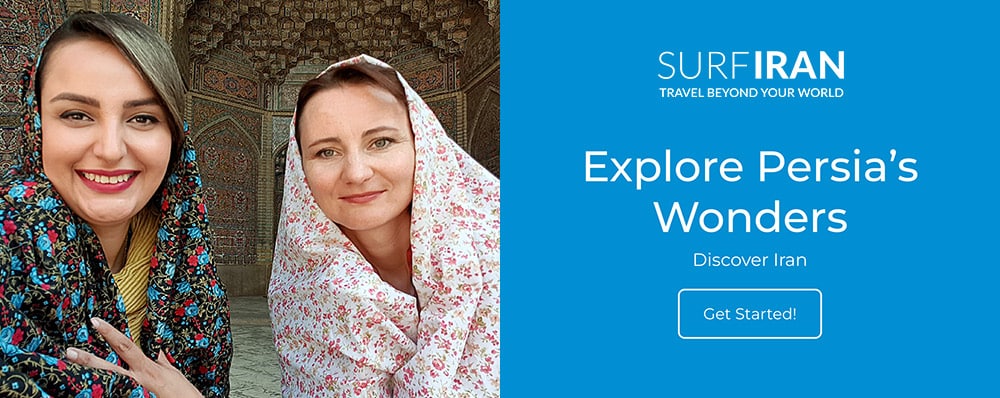Fatemeh Masumeh Shrine in Qom
Where Faith, History, and Architectural Splendor Intertwine

Fatemeh Masumeh Shrine stands as a significant cultural and religious attraction in Qom, second only to the Imam Reza Shrine in Mashhad. This sacred site serves as the final resting place for notable Iranian historical figures, including poets like Parvin Etesami and religious scholars such as Ayatollah Mar’ashi Najafi, Allameh Tabataba’i, Ayatollah Bahjat, along with several Safavid and Qajar kings. Visitors can explore not only the mausoleum of Fatemeh Masumeh but also the graves of these distinguished individuals.
Adjacent to the shrine, the Feyziyeh School is recognized as one of the nation’s most historic educational institutions, featuring stunning decorations from tilework to exquisite mirror work, captivating every visitor. Moreover, the shrine’s museum offers a chance to view some of the most precious silk carpets, handwritten Qur’ans, and more.
Contents
Historical Significance During the Safavid Era

The splendor of the Fatemeh Masumeh Shrine reached its zenith during the Safavid period with enhancements in tile decorations and the construction of domes and buildings to host pilgrims and servants. Shah Ismail I laid the foundation for the north iwan and the old courtyard. Shah Tahmasp I constructed a brick sarcophagus adorned with mosaic and seven-color tiles around the shrine. The introduction of the southern iwan by Shah Safi and the creation of the women’s courtyard, which leads to the tombs of Shah Sultan Hussain and others, highlight the architectural evolution during this era.
The Qajar Period
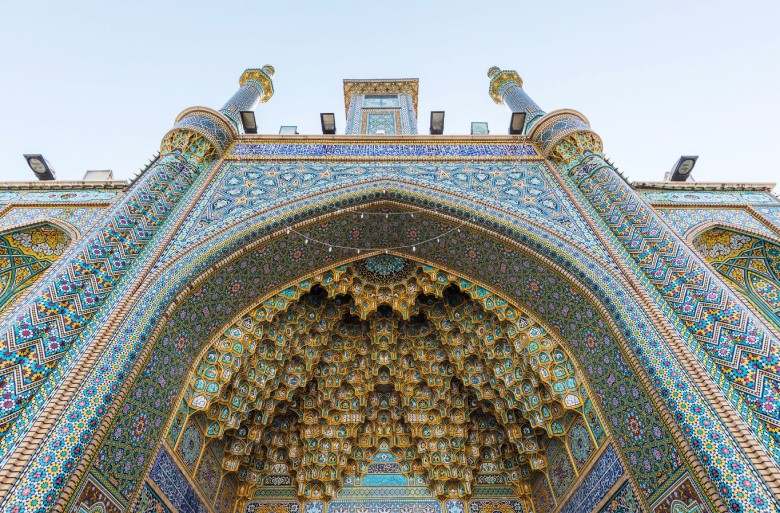
Fath Ali Shah Qajar initiated the construction of a dome adorned with 12,000 gold bricks and requested the shrine’s sarcophagus to be silver-coated, undergoing multiple restorations over time. The period also saw the gold plating of minarets, the crafting of a golden door, and artistic ceiling decorations under the dome, enhancing the shrine’s grandeur.
Courtyard Atiq
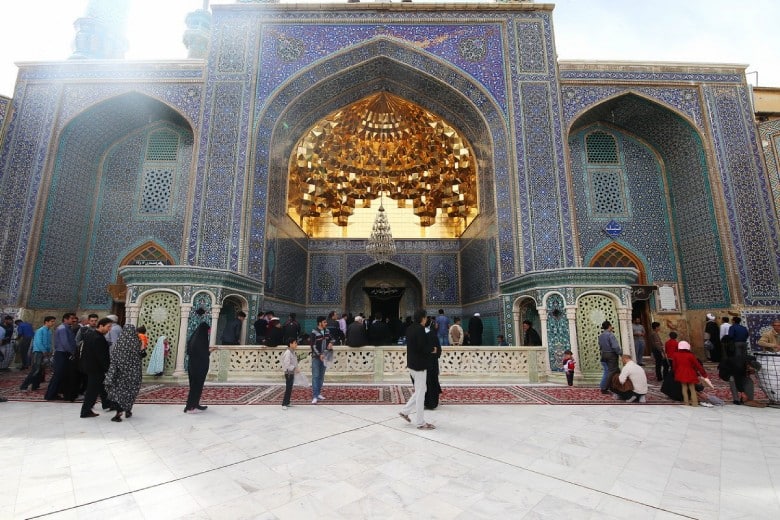
Courtyard Atiq, existing since Fath Ali Shah’s time, underwent significant modifications to become an irregular octagon. The increase in iwan numbers, especially the renowned Gold Iwan decorated during Fath Ali Shah’s reign, exemplifies the architectural advancements.
New Courtyard
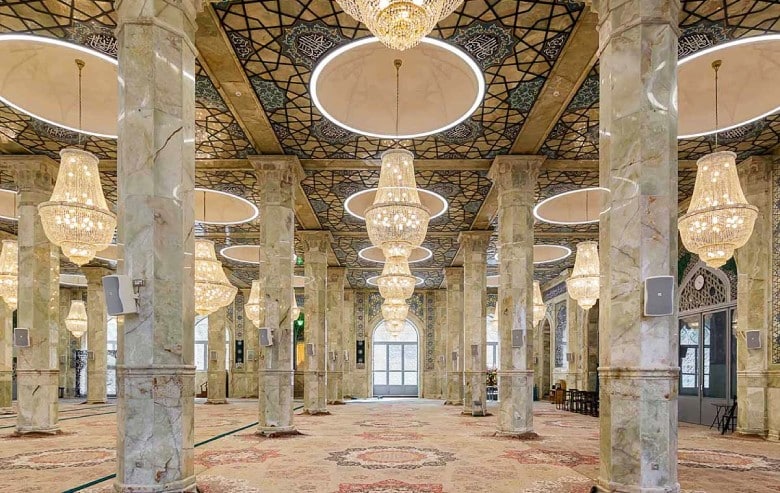
The New Courtyard, attributed to Mirza Ali Asghar Khan Amin al-Soltan, showcases a polygonal structure with seven iwans, including the famous Mirror Iwan, a masterpiece of Qom’s architectural heritage. Visitors can admire a variety of inscriptions, tile work, plaster moldings, mirror work, and muqarnas throughout the new courtyard’s iwans.
Courtyard Saheb Alzaman
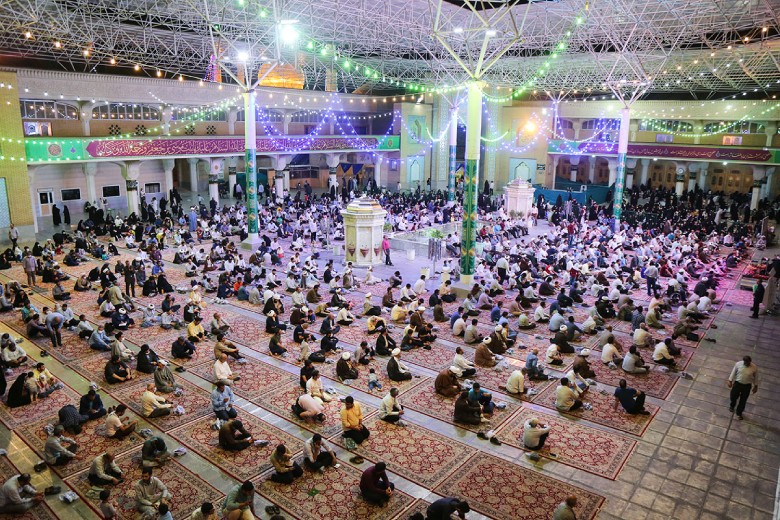
Covering an area of 8,000 square meters adorned with Quranic inscriptions, Courtyard Saheb Alzaman features four entrances and new courtyards such as those of Hazrat Javad Al-Aémmeh and Prophet, adding to the shrine’s expansion. The mausoleum of Fatemeh Masumeh is located within the Balasar Mosque in Courtyard Atiq.
Minarets
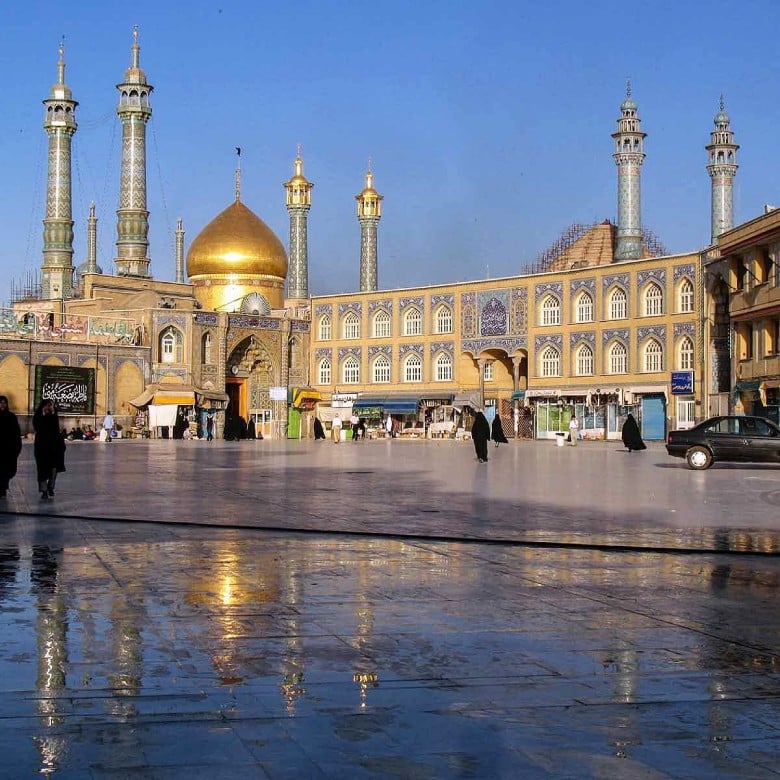
Six minarets stand within the shrine complex, including the Atabaki minarets in the Atabaki Courtyard and the shorter minarets used for call to prayer, showcasing the architectural diversity and significance of the shrine.
Balasar Mosque
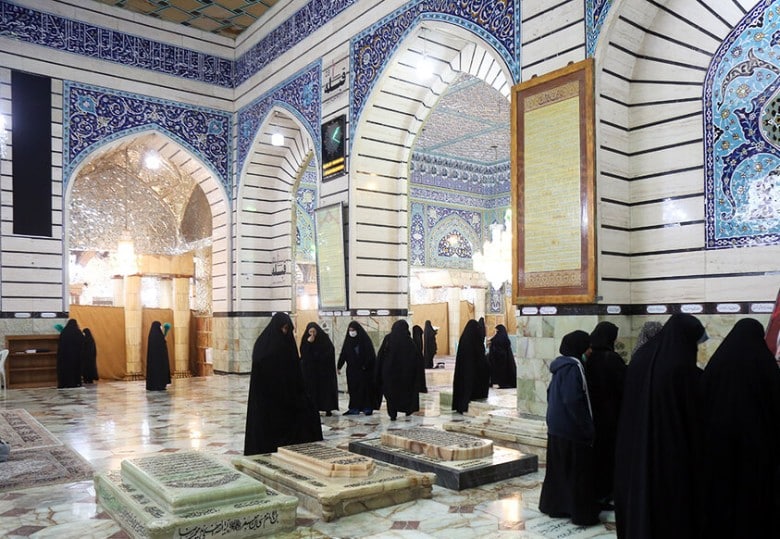
One of the oldest and most beautiful sections, the Balasar Mosque, is located in Courtyard Atiq, named for its position above Fatemeh Masumeh’s resting place. The mosque has served as a guest house during the Safavid era and is the final resting place for renowned clerics and scholars.
Library of Fatemeh Masumeh Shrine
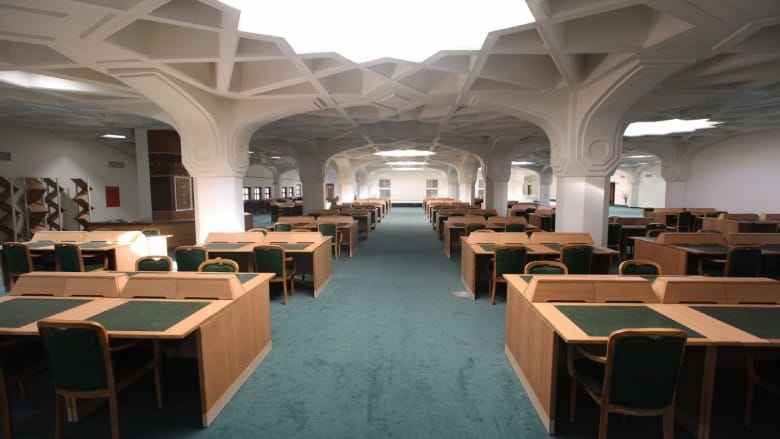
Established in 1952 by Sayed Abolghasem, the library, now located in the Courtyard Prophet, ranks among Iran’s largest public libraries, offering a rich collection of stone, manuscript, printed, and lead-printed books across four floors.
Museum of the Shrine
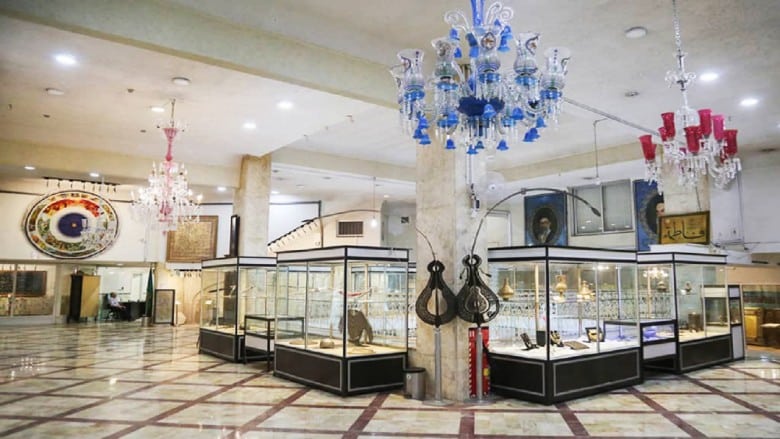
As one of Iran’s oldest museums, established in 1935, the museum holds invaluable artifacts from lovers of the Ahl al-Bayt, kings, and historical and art enthusiasts. Its diverse sections include paintings, textile art, carvings, ancient stones, metalwork, marquetry, calligraphy, and glassware.
Feyziyeh School
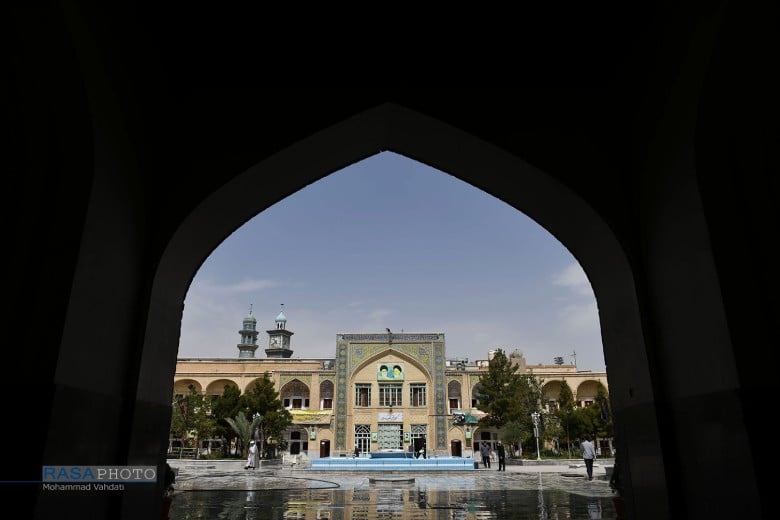
Situated beside the shrine square, Feyziyeh School, registered as a national heritage site, was built during Fath Ali Shah’s reign and is known for its educational and political significance in contemporary Iranian history.
Visiting the Shrine
The shrine is open 24/7, allowing visitors to purchase Qom bus tickets anytime for pilgrimage or sightseeing. The museum visiting hours are from 8 AM to 2:30 PM and 5 PM to 9 PM daily.
Book Bus Ticket

Address and Accessibility
Easily accessible by various transportation modes, the shrine is located in Qom, Zayer Boulevard. For a comfortable journey, purchasing Qom train tickets is recommended, ensuring a memorable visit to this sacred site.
Read More
